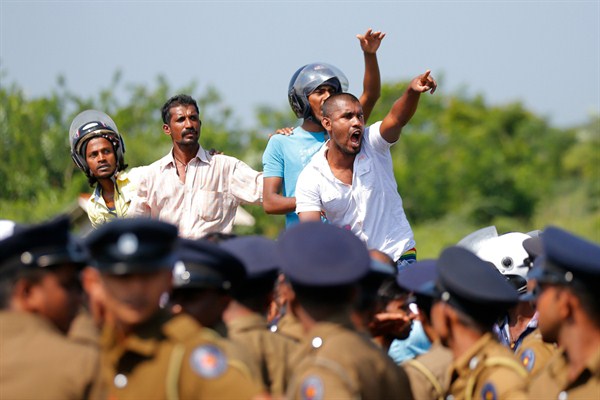A battle for influence is underway in Sri Lanka between India and China, played out in rival infrastructure projects and financial lifelines to an island nation that is buried in a debt crisis and trying to balance competing interests in New Delhi and Beijing.
In January, Sri Lanka’s minister for regional development, Sarath Fonseka, declared that his country and India were finalizing an accord to develop the strategically located but underutilized Trincomalee port in northeastern Sri Lanka. This was seen by some domestic Sri Lankan observers as an attempt by their government to appease India in the face of growing Chinese involvement in Sri Lanka’s economy, after China surpassed Japan as the island’s main source of external financing.
But owing in part to that very involvement, Sri Lanka faces some $64 billion in national debt and is desperately seeking capital inflows on better terms than previous deals with China. Outstanding commercial loans from Beijing for several major infrastructure projects make up $8 billion of Sri Lanka’s total national debt. About a third of Sri Lanka’s export earnings currently go toward annual foreign debt repayment. Last year, Sri Lanka had to turn to the International Monetary Fund for a $1.5 billion bailout package that came with stiff conditions on restructuring public spending. Amid the debt crisis, proposed Chinese investments have now run into significant local opposition over fears of what Sri Lankans call Chinese colonization.

